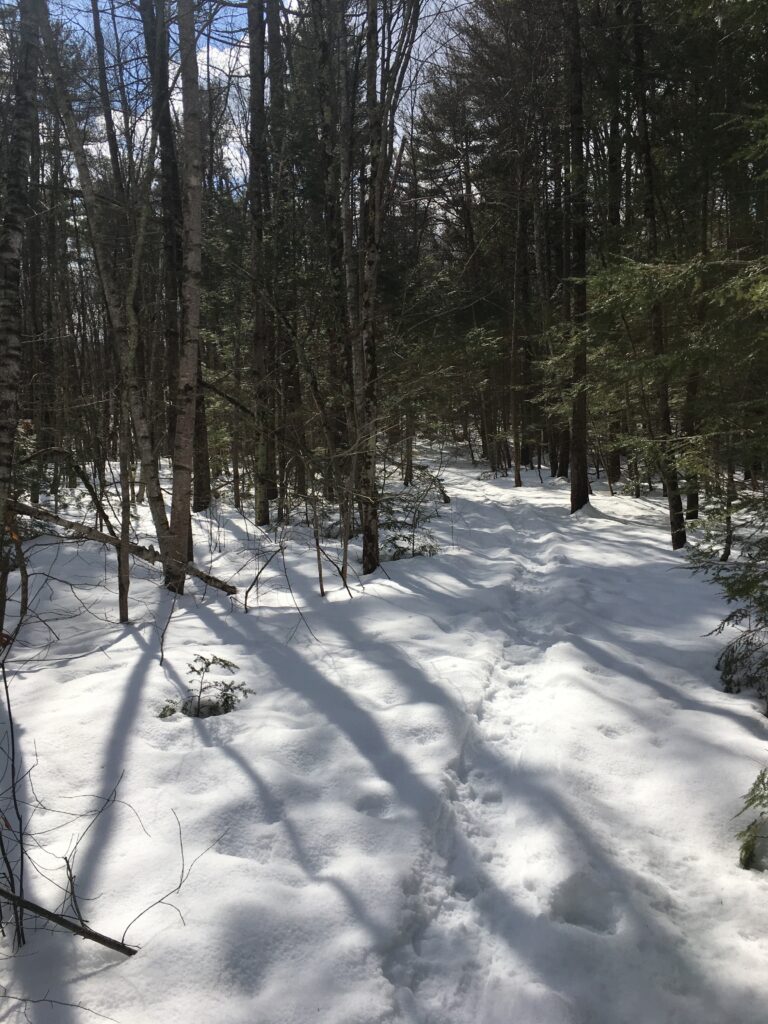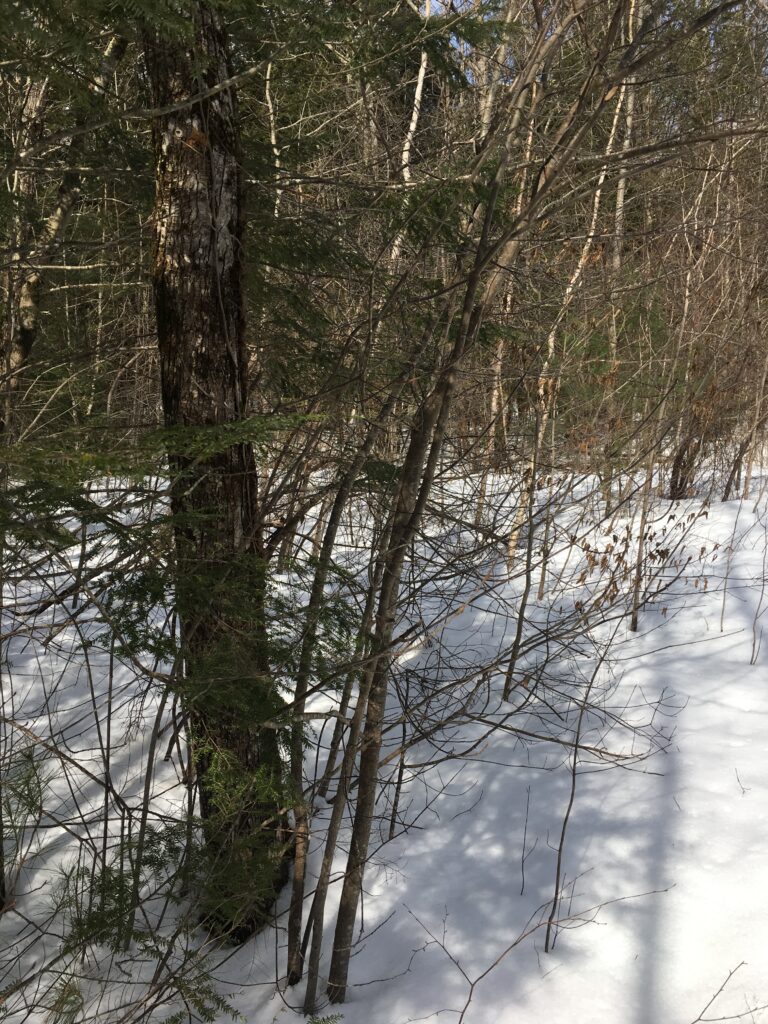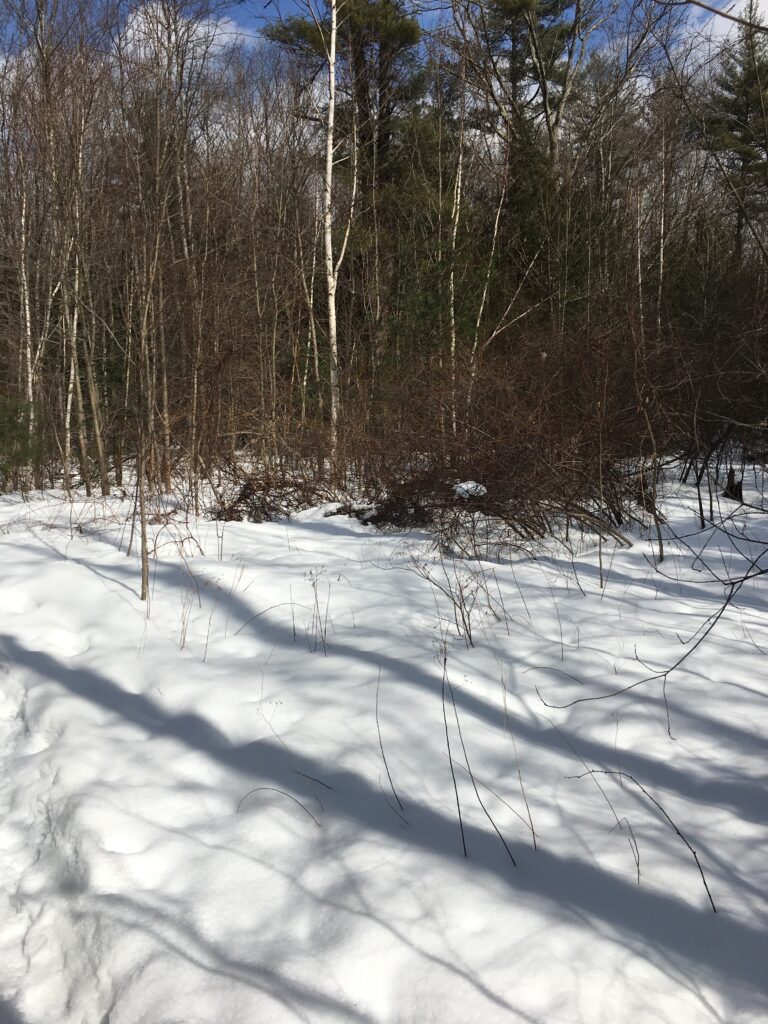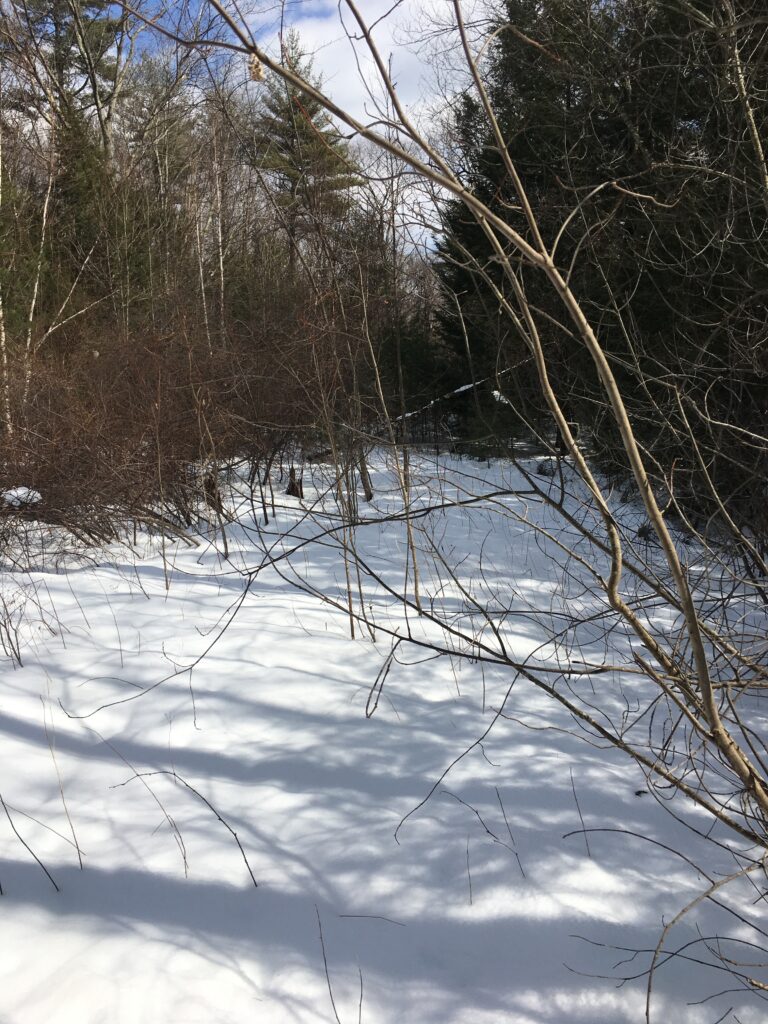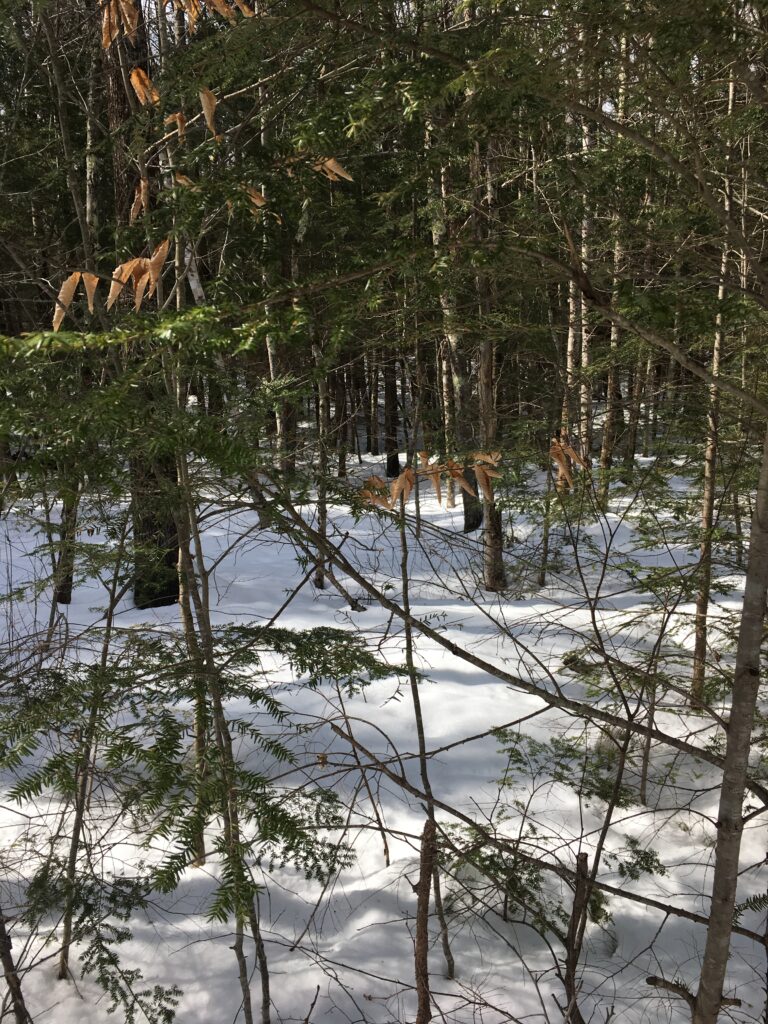Over spring break I decided to revisit the same site, Oakland Town Forest, as I did over winter break due to its many similarities to Centennial woods. This forest had a similar beginning to Centennial because the land was converted from farms to conserved forest once they were eventually sold in the 1900s. Now that it has become a forest, it’s main uses are for conservation and recreation for the town of Exeter just like Centennial’s uses in Burlington and the campus.
The observations made at my site show the similarities in species composition of Oakland and Centennial and few differences. Directly around my site, there are Eastern white pines, Eastern hemlocks, American Beech, red maple, and many paper birches. The range of these species covers most of the northeast which would explain why southern New Hampshire has almost identical compositions. The two species that are found in Centennial but not the Oakland site are buckthorn and Norway maple. The issue with the two sites is that they are used heavily for recreation and dog owners, so the only animal tracks visible are dogs (also due to the melting of most of the snow). For animal sitings, there was only black crows and unknown insects crawling in the snow (seen in a picture below).

